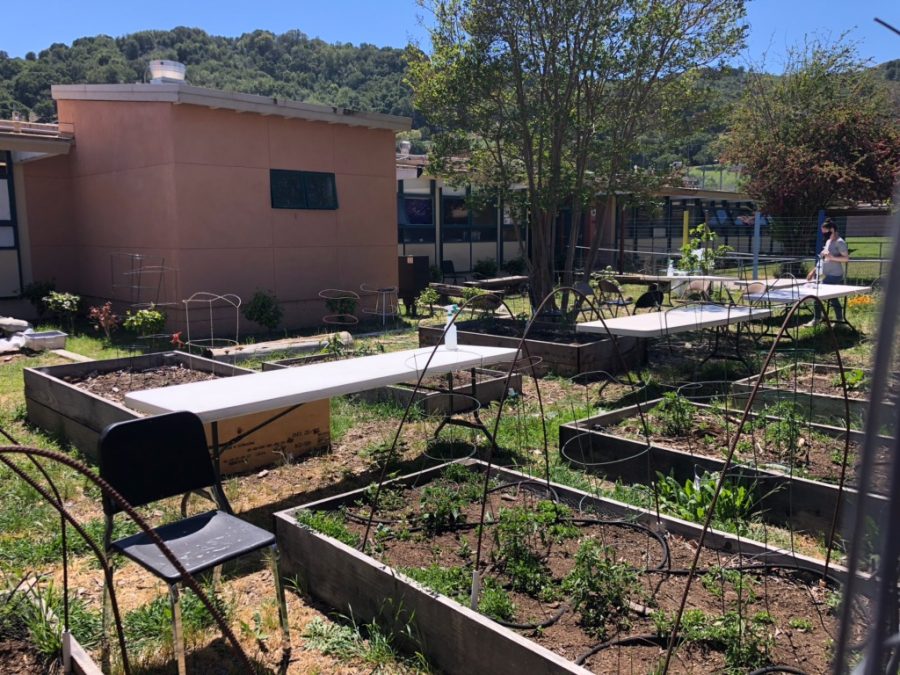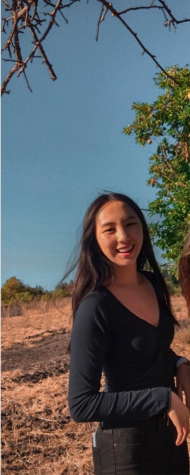The Foods Class Adapts to Hybrid Learning
May 23, 2021
When the District announced the return to in-person learning on Feb. 3 with the hybrid model, the Foods class quickly transitioned to accommodate a new cooking environment. Using the “outdoor” kitchen in the garden, students in the Foods and Foods Advanced class went from cooking in their own kitchen to cooking in an outdoor garden setting as a class.
There are two different Food classes: Foods 1 and Foods Advanced. Foods Advanced switches between international food and baking each year, and Foods 1 must be taken before Foods Advanced.
Foods is an interactive class that strongly emphasizes teamwork in building professional chef-like skills, but COVID-19 restrictions only allowed six people inside the classroom at once. With the help of associate principal Sarah Harris and campus supervisor John Fowley, an outdoor “kitchen” was created so students could prepare and cook food outside. The outdoor kitchen is served as a prep kitchen where students can prepare ingredients before cooking. Tables and sinks are set up outside in the garden with an additional tool shed to keep extra equipment, including a smoker, so that students can cook outside. “What we have done is use [the garden] to prep salads or ingredients that are then cooked by the crew inside the traditional classroom on our stoves and induction cooktops,” Cryan said. “Every week has been a bit of an experiment because we are cooking different foods which require different tools- the setting has been flexible and so have the students.”
“While this is making the class possible, it isn’t ideal. Students say it can be hard to see their [computer] screens at the start of class due to the glare of the sun. I am divided between the classroom and garden and so [I am] less available than I’d like for help as the students work,” Foods 1 and Foods Advanced teacher Katherine Cryan said. This isn’t always the case for every period because some Foods periods have just six students in them at once, allowing everyone to be in the classroom. “My class fits into the room with six students, so we are indoors when baking. We are all spaced out and have assigned seats,” sophomore Camryn Hirst, who is in Foods Advanced, said.
Students in Cohort C, the group remaining at home over Zoom for the rest of the year, don’t get to participate in the cooking process with their fellow classmates. “My greatest concern has been for the Cohort C students in the hybrid model,” Cryan said. “They are encouraged to cook along with us during class and are given the recipes in advance, but many choose to take a less active role—whether by choice or because their home kitchens are not available during class-time. They are able to see what is happening in the kitchen due to our new iPad, but I am sure that observing the action in the classroom is not nearly as fun or valuable as participating actively.”
Cohort C students report that observing or cooking at home isn’t nearly as fun as cooking in the classroom. “When I’m at home, I still cook and I also observe on Zoom while the teacher is making something as well. My least favorite part about staying at home is that I don’t get to cook in a different environment because I would love [to] cook in class,” senior Desiree Randall said. Randall, who was in Foods 1 last year, feels that the class isn’t nearly the same experience online. “I did take Foods in sophomore year, and I would say it was a lot more lively [than this year’s Food class] because we got to cook in the classroom altogether,” Randall said.
With just under half the students present in the in-person class at once, the course isn’t nearly as dynamic compared to how it was pre-COVID-19. “The classroom itself is also very quiet and subdued compared to the usual bustle that is Foods,” Cryan said.








